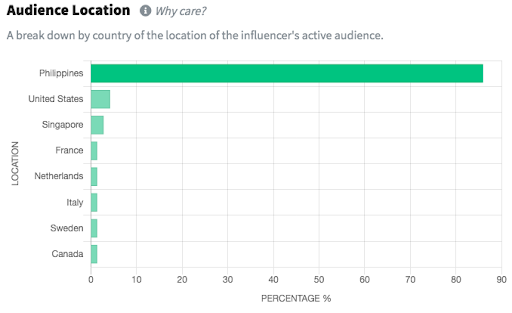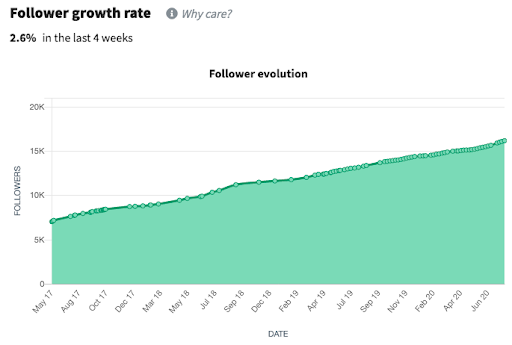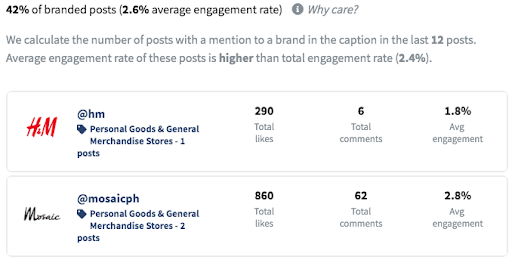Negosentro.com | Step-by-Step Influencer Marketing for your Small Business | Influencer marketing is only for big brands that are already famous around the world, right?
Wrong! Just because your company isn’t Nike or Zara doesn’t mean you can’t reap the benefits of influencer marketing. The great thing about social media is that there’s something for everyone, and influencers can help project your brand’s message where it counts, regardless of your location or number of employees.
We know it can be a bit overwhelming to find influencers and launch a successful campaign, especially if this is new to you. So to help you get started, we’ve outlined five basic steps for successful influencer marketing for your small business.
Step 1: Plan Your Campaign
First, define the objectives for your influencer marketing campaign. For small businesses, some common goals are brand visibility, an increase of followers on social media, or visits to a new store. Also, define your campaign budget and timeline, setting targets for short and long term. Ensure your targets are measurable so that you can calculate your success later on.
Next, decide where you’ll launch your campaign. Send out a survey or ask your audience where they spend time online. Generally, for small businesses, Instagram is a good option. The network has more than one billion active users, and 72% say they’ve bought something they’ve seen on the platform. After choosing your platform, make sure you have a presence there, with created content and a clear brand message.
After that, set up a strategy to measure your success. You can’t know if you’ve reached your objectives without analyzing the clicks, traffic, sign-ups or sales generated by your campaign. If this is new for your business, Google Analytics is a great place to start. You can set up a free account, and there are lots of online courses that can teach you how to use the service.
Finally, develop any campaign-specific hashtags or discount codes. Keep things simple and easy to identify. For example, something like “SUMMER20” is an easily recognizable discount code. Specific elements like these will also help you track the progress of your campaign.
Once you have your objectives and strategies laid out, it will be much easier to find the perfect influencer for your campaign. On to Step 2!
Step 2: Find & Analyze Influencers
Finding the right influencer can make or break your campaign, so it’s important that you find the best person to transmit your brand’s message. As a small business, there are a few things to keep in mind:
Location
When looking for an influencer, stay local! At the very least, you want to choose an influencer from your country, and even better if they’re from your city or region. The influencer doesn’t have to have tons of followers. In fact, nano or micro influencers, who have fewer followers but higher engagement, will probably be more helpful to your campaign.

Audience
Perhaps more important than the location of the influencer is the location of their audience. If you’re a small business in the Philippines, for example, you’ll want to reach a Filipino audience who can access your product. Influencer marketing software can analyze an audience’s location, as well as their language, gender, age, and interests. That way, you can make sure that the influencer helps you reach the right people.

Engagement
Engagement is the level of interaction between an influencer and their audience. If an influencer’s posts have a lot of likes or comments, it shows that their audience cares about what they say. You should strive to find an influencer with a good engagement rate, because if their audience is disinterested in their content, what good does that do for your brand?
Engagement can vary with time, so it’s best to analyze an influencer based on their most recent publications. While you can find formulas to calculate engagement manually, it’s much easier to use influencer software. These platforms immediately calculate engagement and compare influencers to their peers, as well as help you detect if engagement is genuine or not.
Follower Growth
Look at how an influencer’s follower base has grown. You want to see organic growth over time. Be aware of influencers with negative growth or growth that spikes and dips. This could be a sign the influencer bought fake followers. You can get this data manually by regularly checking Instagram, but influencer software can also take care of this for you.

Branded Posts
It’s important to know what kinds of brands an influencer has already worked with. You want to find someone whose collaborations are with brands who share your values and have similar audiences. Avoid influencers who have undertaken controversial collaborations or ones that go against your core values. Looking at past brand collaborations can also give you an idea of how your potential collaboration could go with that influencer and what type of content they create.

Step 3: Reach Out
When reaching out to your selected influencers, as a general rule you should contact more than you’ll need. Some won’t be interested in collaborating, and some may not even respond.
Create an email template that you can personalize. It should include:
-
- Information about your company (what you do, who you are, your brand message)
- Campaign details (objectives, timeline and incentives)
- Why you think that influencer is great for your campaign
Answer any questions the influencer may have. Be clear and upfront, yet friendly. You can also ask the influencer for their media kit, a type of profile that will give you a better look into their profile’s metrics and any past collaborations they’ve done.
Step 4: Negotiate
As a small business, your budget will naturally be lower than other companies. But that’s okay! Some influencers will collaborate in exchange for your product, service or experience. Just keep in mind that the price will depend on the number and type of posts that you want.
When negotiating content, explain what key points you want the influencer to communicate, but give them creative freedom over their own content. The influencer knows their audience and how to deliver your message to them.
Stay friendly during negotiations. If you start off on the right foot, you may be able to build a lasting relationship with an influencer, which could be great for future campaigns.
Step 5: Launch the Campaign
If you’ve had a hang-up or two before arriving at the moment of launch, don’t worry. This is normal, especially if it’s the first time you’ve ventured into influencer marketing.
Have Google Analytics ready. As soon as the influencer uploads their first post, you can start measuring its effectiveness. Also, touch base with the influencer throughout the campaign. This way, if something’s not working, you both have enough time to fix it.
When the campaign is finished, collect your analytics, as well as the influencer’s internal metrics. With both sets of data, you’ll be able to see if you’ve achieved your objectives. Keep an open mind here; some objectives may take longer to reach, or you may even discover a new need or objective that you hadn’t thought of before.
Last Words
Even though you may not have the same resources as global brands, your small business can still find success in influencer marketing. If you strategize well, influencers can help you grow brand awareness, drive traffic to your shop or website, or maybe even increase sales.
To succeed, stay focused on your objectives. Keep them present throughout your campaign. And if a collaboration goes well, maintain your relationship with the influencer so that you can repeat the campaign at another key moment in the future.














